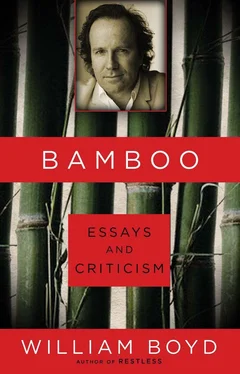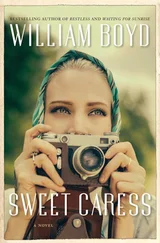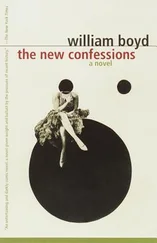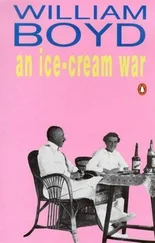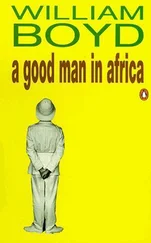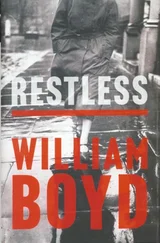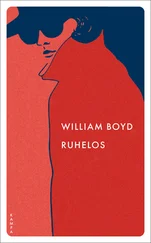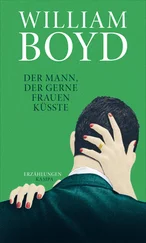Certainly Spencer in his early work followed the example of the quattrocento with genuine success, but no pictures in this exhibition date from before 1933, and their naivety, their distortions and simplifications have moved on from emulation or the influence of classical traditions. Spencer’s faux-naïf style is from this time onwards sui generis —it stands or falls on its own.
And its putative success would have been far easier to establish or defend if it were not counterposed — and undermined — by examples of a technical skill and artistry unshakeable in its self-assurance and triumphant in its exceptional ability. For example, Nude Portrait of Patricia Preece is one of the great disturbing portraits of the twentieth century. Initially, it is the arrant candour of the image that unsettles and disquiets. The almost palpable weight of the large, pendulous, blue-veined breasts, the folds and creases of slack flesh, all the flaws and discrepancies of a particular body that give an individual her, or his, physical quiddity. Then almost unconsciously you grow aware of the variety of skin tone — the chicken-fat yellows, the tarnished greens and licheny blues, the raw pinks and dirty browns, the blurry roses and clotted creams. Patricia Preece’s body seems extraordinarily lit , as if by some sublime cinematographer, until you realize that this is in fact what we are actually like, that human skin, closely observed, looks like this, that this improbable assemblage of pigments on a canvas is the product of an artist’s eye scrutinizing what he sees in front of him. Steadily, other aspects of the portrait emerge: the unusual intensity of Patricia Preece’s big-eyed stare, the troubling ambiguity of her expression — a tension? or a superb confidence? Then, inevitably, ideas of artist and model intrude on the reverie of portrait and spectator. This model is the artist’s wife. Even if you knew nothing of Spencer’s fraught relationship with Preece you would concede the astonishing intimacy of the portrait, acknowledge what it offers up and exposes to the viewer’s gaze, what emotions and potential history are implicit in it. The unequivocal power of this and other portraits set the standards by which the rest of Spencer’s work is to be judged, and, as with all great artists, the criteria are established by the artist himself.
The physical layout of the exhibition is constructed roughly along lines that Spencer envisaged. It was an idea that originated in the early 1930s after the completion of the Burghclere chapel (and was probably inspired by it). Spencer conceived of a notion of displaying his work which he referred to as the Church-House project, or a “church of me” as he sometimes described it, a collection of pictures that would represent a conspectus of his unique imagination, in both its sacred and secular dimensions. The architecture of this building was vague but was approximately churchy in configuration — a long nave, with side chapels, a transept, an altar and altarpiece. He made rough sketches of this scheme over the years and it is fair to say that almost anything he painted after its conception had its place somewhere in the rambling aggregate of buildings, small rooms, alcoves and corridors that the Church-House design had now become. He was, to put it another way, painting to equip and fit out his own private gallery which, when completed, would be a summation of his life’s vision. Clearly, it was always going to be impossible to reproduce this ambitious plan in its entirety, but the Barbican has made a good stab at it, first by assembling a large and significant proportion of those pictures, and second by physically recreating something of the church effect. In the “nave” of the gallery pictures are grouped under generic titles, set in alcoves, and on either side are a couple of “rooms,” or “chapels,” one containing the magnificent portraits of his formidable second wife Patricia Preece, the other for the “Christ in the Wilderness” series, the small square paintings set high up on the wall, like a frieze. A large and bizarre crucifixion (of 1959), a kind of horrific cartoon, acts as the altarpiece, and to the left the gallery continues, as one arm of an extended transept into rooms containing the Port Glasgow Resurrection , and the Hilda Chapel, a homage to Spencer’s long-suffering first wife, containing the enormous, unfinished Apotheosis of Hilda .
It was worth the effort: the arrangement conveys a vivid sense of Spencer’s idiosyncratic personality and obsessions, and you gain some sense — however stylistically distinct the work is — of its unifying factor, that joyous celebration of life’s diversity. The Patricia Chapel is the most effective. There is an almost visceral shock experienced as you walk in, with four of the big pictures hung virtually frame to frame: the two double portraits and two nudes, and, to each side, two portraits. The viewer stands there, faced with this vision of flesh, pinned in a crossfire of Patricia Preece’s unflinching stares, nervously privy to Spencer’s candid exultation in his wife’s — and his own — nakedness.
But here lies the problem. To move from the profound and disturbing power of the Patricia Chapel back to the “nave” of the gallery is to experience a marked diminution of effect, a diminution brought about by a number of factors that we will come to see are typically Spencerian. To put the contrast very simply, you move from refulgent, life-sized, superbly painted portraits to large long rectangles of canvas crowded with small figures. The juxtaposition is disquieting. But this shape of canvas crowded with its clustering figures was highly popular with Spencer. It embodies what might be termed the predella effect. A predella is part of an altar-piece, a horizontal strip, or separate painting below the main painting, often used, so my Pevsner informs me, “for a number of representations in a row.” Its effect was deliberately designed to be subsidiary. The votary would approach the altar, overwhelmed and awestruck by the vast crucifixion, or transfiguration, or whatever, above it, then kneel, and then his eye would be caught by the predella. The same emotions are experienced in this exhibition on emerging from the Patricia Chapel — nothing matches the power or impact of its pictures. And many of Spencer’s most famous paintings are predella-like, not just in format but in design, containing large “numbers of representations in a row.” The Port Glasgow Resurrection , the “Last Day” sequence, the “Christ’s Passion” sequence, and so on, all reflect this strong linear component. The eye need not necessarily travel from left to right as if reading a text, but it does (in pictures of this sort and shape this is the eye’s natural tendency — it has to be cajoled into roving). Furthermore, if you look closely at, for example, a panel of the Port Glasgow Resurrection, The Reunion of Families , 1945, in purely painterly terms, ignoring its religious import and not attempting to assess its particular meaning, then the first quality that strikes you is the mutedness of the palette. The colours are uniformly sombre and subdued: beige, stone, moss green, grey, dull cinnamons and umbers. There is nothing rich here, nothing vibrant or glowing. At first I thought this might be a side effect of the very unsatisfactory lighting in the gallery or of the curious colouring of the walls the pictures are mounted on — a pale puce — but in fact this dullness is a feature of many of the large paintings on display. Unusually, reproductions of Spencer’s pictures tend to flatter the originals. His colours are predominantly dusty, flat, depthless — even the famous Desire from the “Beatitudes of Love” series shines on the page in a way it does not on the canvas. It is not hard to see why this should be so. In The Reunion of Families (or any number of other examples) the paint is applied very thinly, so thinly that the warp and woof of the canvas is rarely obscured by the pigment. There is absolutely no sense of any joy or satisfaction in the plastic tactile sensation that comes from the application of paint to canvas from loaded brush, no exploration of the fundamental possibilities of oil. Oil paint is used in these cases simply for its basic colour properties, and even then within this oddly reduced, dull range. The paint seems heavily thinned with turpentine, often leaving the squaring-up, pencilled grid clearly visible behind the near-transparent smear of colour. Of course, in these large pictures Spencer reproduces an overwhelming effect of texture, but this is more a result of his love of pattern and minute detail, which is depicted with assiduous and mind-boggling patience. In the great olive drab swathe that is Love on the Moor every brick in the wall which runs along the top of the picture is dutifully painted in, as is every dogtooth and stripe, herringbone and polka dot, dart and flick on the clothes of the picture’s swarming population.
Читать дальше
